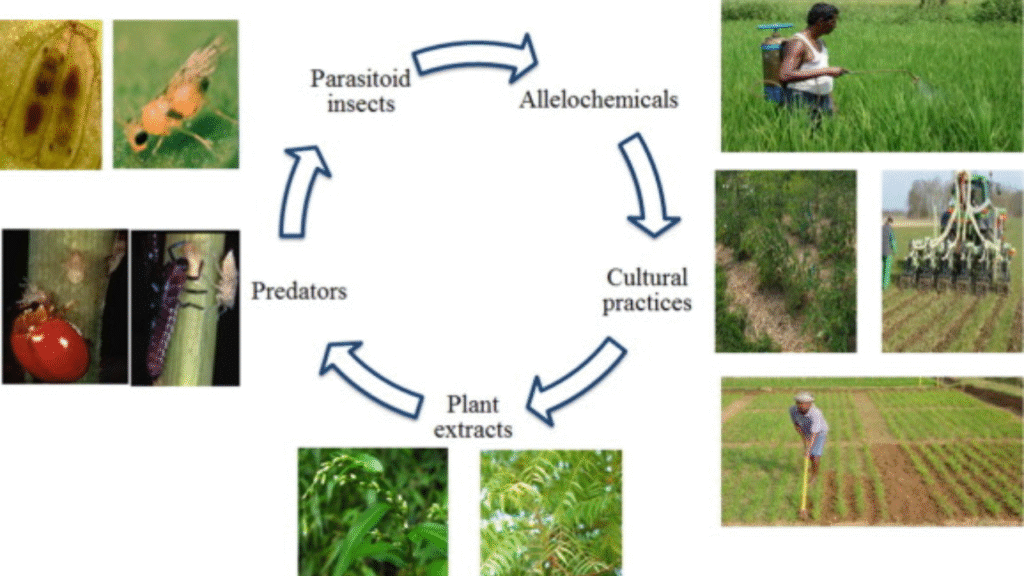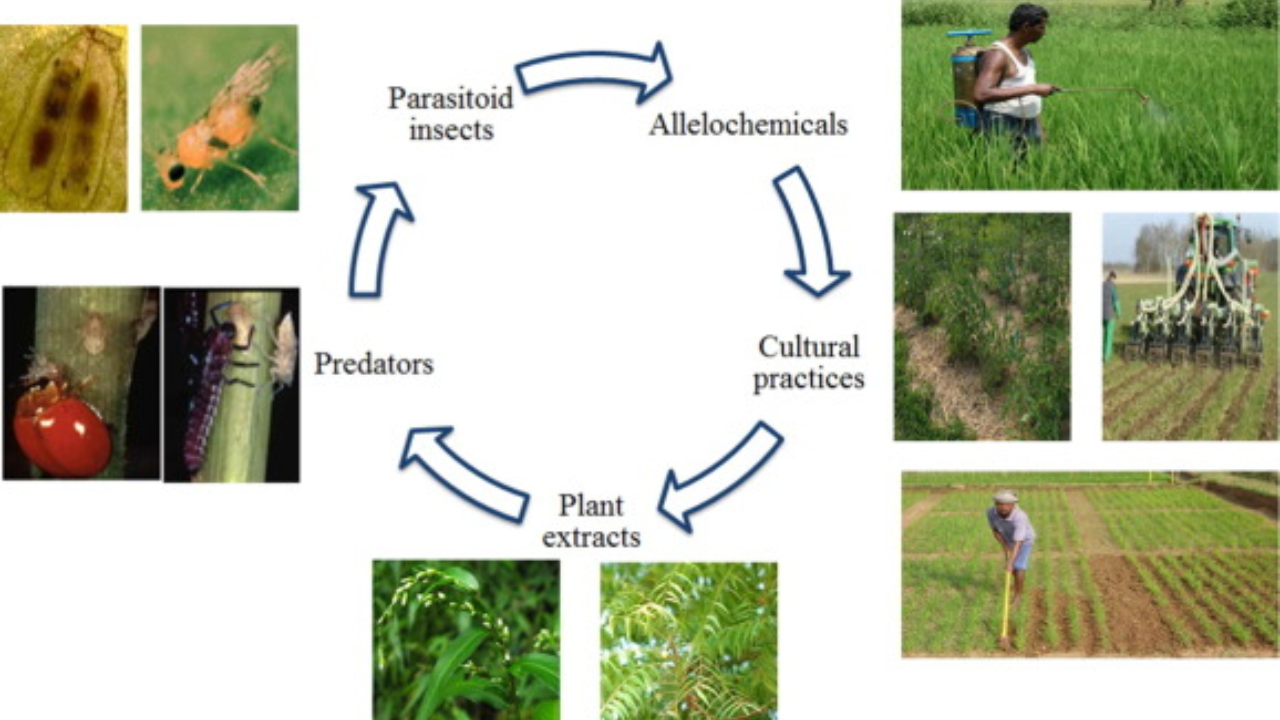
As tropical agriculture grapples with increasing pest pressure, environmental degradation, and pesticide resistance, one solution is proving both effective and eco-friendly: botanical pest control. Across Asia, Africa, and Latin America, farmers are successfully replacing synthetic pesticides with plant-based alternatives—reducing input costs, safeguarding biodiversity, and maintaining crop yields.
This article presents a series of real-world case studies demonstrating how botanical solutions are transforming pest management in key tropical crops like rice, banana, cocoa, and more.
Overview Table: Botanical Pest Control in Tropical Crops
| Crop Type | Botanical Used | Target Pest/Disease | Country | Outcome | Approach Type |
|---|---|---|---|---|---|
| Rice | Neem extract | Brown planthopper | India | 40% reduction in pest load | Foliar spray |
| Banana | Garlic + Chili mix | Banana weevil | Uganda | 60% drop in infestation | Trap coating |
| Cocoa | Citrus peel oil | Black pod disease | Ghana | 50% lower infection rate | Preventive application |
| Coffee | Pyrethrum | Coffee berry borer | Colombia | Comparable to synthetic | Integrated IPM |
| Vegetables | Basil + Marigold | Aphids and whiteflies | Philippines | 70% decrease in pest attacks | Companion planting |
Case Study 1: Neem-Based Pest Control in Indian Paddy Fields
Location: Andhra Pradesh, India
Crop: Rice
Pest: Brown Planthopper (Nilaparvata lugens)
Botanical Used: Neem seed kernel extract (NSKE)
Approach & Results:
Farmers applied a 5% NSKE solution twice during the cropping season. The botanical acted as both a feeding deterrent and oviposition inhibitor, breaking the pest lifecycle.
- Pest population dropped by 40% within 2 weeks
- Yield increased by 12% over untreated fields
- Natural enemies like spiders and dragonflies flourished
Conclusion: Botanical control preserved ecological balance while protecting yields.
Case Study 2: Garlic-Chili Repellents for Banana Weevil in Uganda
Location: Central Uganda
Crop: Banana
Pest: Banana weevil (Cosmopolites sordidus)
Botanical Used: Crushed garlic and chili in kerosene
Approach & Results:
Local farmers coated banana stem traps with the botanical mix. The pungent oils repelled weevils and prevented egg-laying.
- Infestation levels decreased by 60%
- Traps remained effective for over 7 days
- Use of synthetic pesticides dropped by 80%
Conclusion: A low-cost, DIY botanical solution became a community-adopted success.
Case Study 3: Citrus Peel Extract Against Cocoa Black Pod in Ghana
Location: Eastern Region, Ghana
Crop: Cocoa
Disease: Black pod disease (Phytophthora palmivora)
Botanical Used: Essential oils from orange and lemon peels
Approach & Results:
Fungal spores were inhibited by applying citrus oil emulsions weekly during the rainy season.
- 50% reduction in disease incidence
- No residue on pods at harvest
- Farmers reported better pod quality and fewer harvest losses
Conclusion: Botanical fungicides served as a safe preventive tool in humid climates.
Case Study 4: Pyrethrum Use in Coffee Plantations in Colombia
Location: Antioquia, Colombia
Crop: Coffee
Pest: Coffee berry borer (Hypothenemus hampei)
Botanical Used: Pyrethrum extract from Chrysanthemum flowers
Approach & Results:
An IPM strategy included pyrethrum sprays and regular field monitoring.
- Effectiveness on par with synthetic insecticides
- 30% fewer chemical applications needed
- Beneficial insects like parasitic wasps were preserved
Conclusion: Pyrethrum is highly effective when integrated with field scouting and timing.
Case Study 5: Companion Planting with Basil and Marigold in the Philippines
Location: Luzon, Philippines
Crop: Tomato and leafy greens
Pests: Aphids, whiteflies
Botanical Used: Living companion plants (basil, marigold)
Approach & Results:
Farmers intercropped vegetables with aromatic herbs. These released volatile organic compounds (VOCs) that deterred soft-bodied pests.
- 70% pest reduction over monoculture plots
- No need for insecticides during early growth
- Improved pollination from increased flower diversity
Conclusion: Companion planting with botanicals created a natural pest barrier and boosted biodiversity.
Benefits of Botanical Pest Control in the Tropics
| Factor | Botanical Advantage |
|---|---|
| Cost | Often made from local materials, reducing expenses |
| Environmental Safety | Low toxicity, biodegradable, protects pollinators |
| Resistance Management | Multiple compounds reduce risk of pest resistance |
| Ecosystem Compatibility | Preserves beneficial organisms and soil microflora |
| Farmer Empowerment | Promotes self-reliance and traditional knowledge |
Challenges Faced
While the benefits are clear, farmers and researchers encountered some common limitations:
- Standardization: Active compound levels vary by plant source and preparation method
- Short residual activity: Frequent application is needed for sustained protection
- Formulation difficulties: Lack of emulsifiers or carriers can limit effectiveness
- Limited awareness: Many farmers are still unaware of the full potential of botanicals
Future Potential and Scaling Up
To make botanical pest control more scalable and reliable:
- Investment in local processing facilities for botanical formulations is key
- Governments can support farmer training programs and demonstration plots
- Research institutions should continue validating traditional knowledge through trials
- Public-private partnerships can ensure supply chain and market access for ready-to-use botanicals
Conclusion
Botanical pest control is proving itself not just as a niche practice, but a mainstream alternative in tropical agriculture. These case studies show that with local resources, farmer innovation, and scientific support, plant-based pest management is helping create healthier, more resilient, and sustainable farms.
FAQs
Q1: Do botanical pesticides work as fast as synthetic ones?
Not always—they may take longer to show effects but are safer and eco-friendly.
Q2: Can farmers make their own botanical sprays?
Yes, many traditional recipes using neem, garlic, and chili are effective and low-cost.
Q3: Are botanicals allowed in certified organic farming?
Most botanical extracts are approved under organic standards, depending on formulation.

